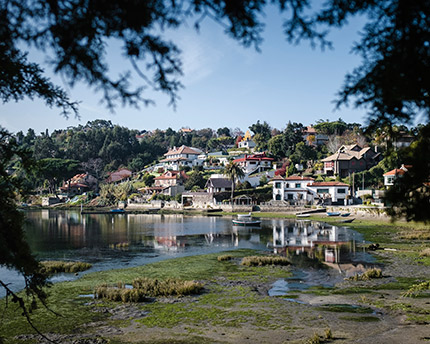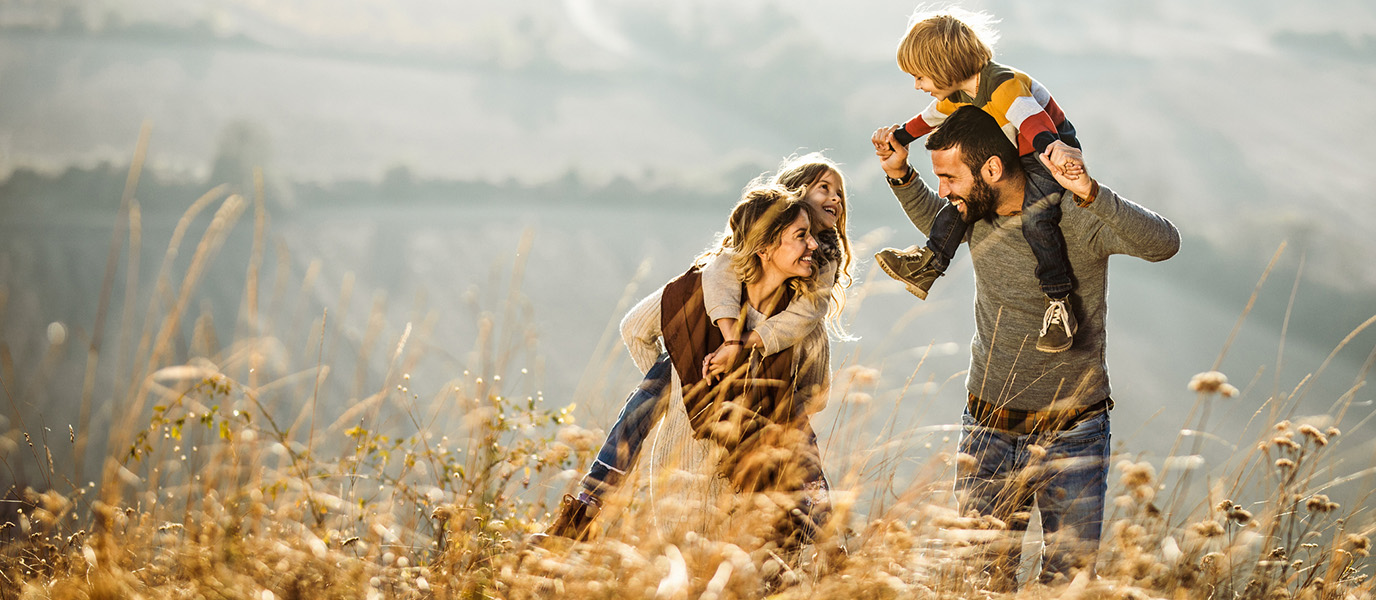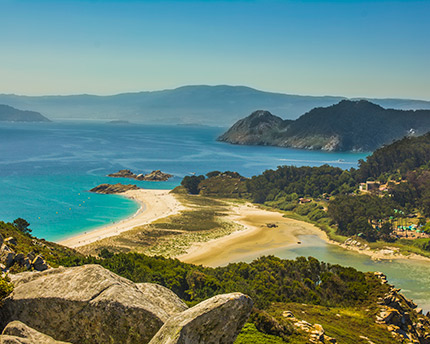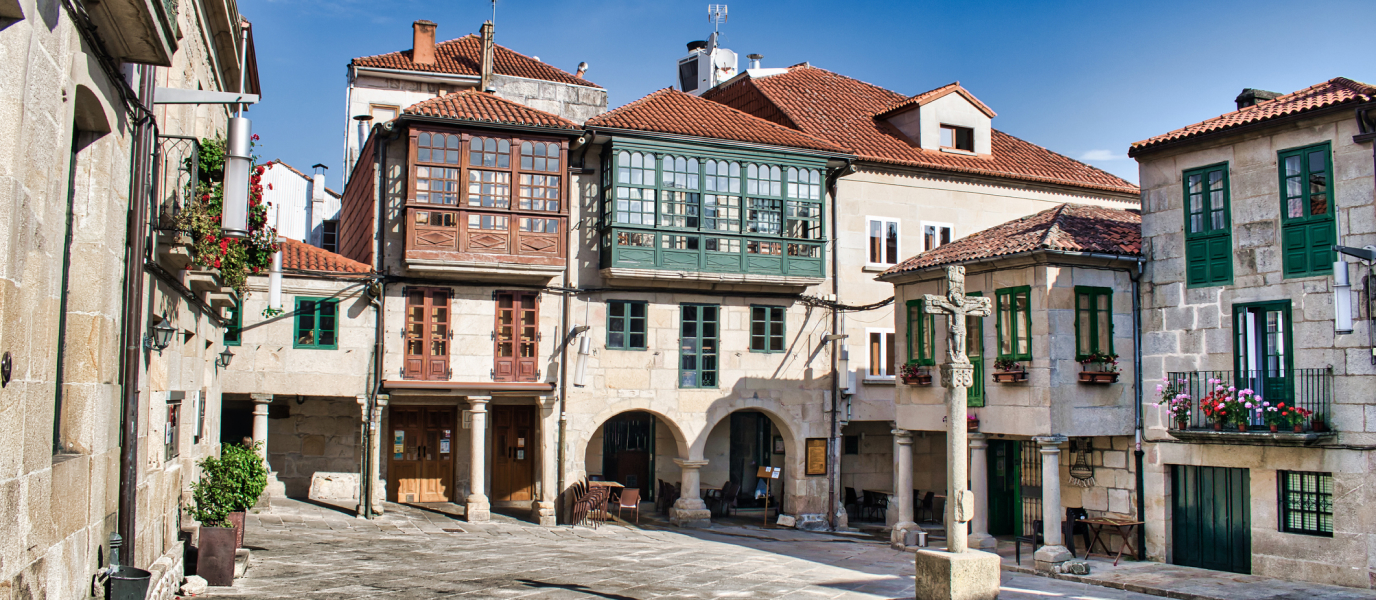Located at the southwest end of the Vigo estuary, this ancient fishing village has been shaped by centuries of history. Its small bay, conveniently protected from the ravages of the Atlantic, has always seen the comings and goings of fishermen and traders, including one of the most famous ships in history, La Pinta, which arrived in the port of Baiona in 1493, announcing the discovery of the New World.
Intriguing historical sites, artistic and cultural treasures, overwhelming nature, and extraordinary gastronomy make this destination one of the most alluring attractions in the province of Pontevedra and, therefore, a place not to be missed.
Monterreal Castle, watching over Baiona for more than two thousand years
The undisputed emblem of the city, this defensive fortress perched on Monte Boi, on the peninsula that surrounds the bay of Baiona to the south, is a magnificent historical treasure.
Surrounded by three kilometres of ramparts, the building of the castle as it’s now known began in the 12th century, although there are remains from as early as the 2nd century BC. Celts, Phoenicians, Romans, Visigoths, and Muslims have all left their mark on this place. In any case, its current appearance reflects modifications made from the 16th century onwards.
Flanked by the sea crashing against the rocks, a lovely walk around Monte Boi and the ramparts allows you to discover key points of the enclosure, such as the Tower of the Prince, the Serrápio shellfish farm, the remains of the castle, the monument to the sailors, the tower of La Tenaza, and the Puerta del Sol (the oldest of the three entrances along the perimeter), among others. In addition, since 1966, the castle has housed the Conde de Gondomar state-owned hotel.
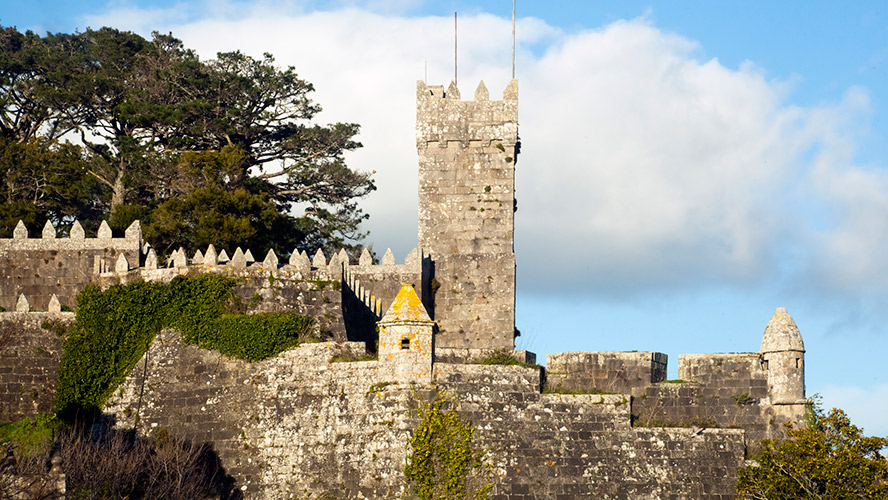
La Pinta Caravel, Columbus’s heritage
On 1 March 1493, Martín Alonso Pinzón landed in the port of Baiona with La Pinta, a caravel some 15 metres long and three masts (foremast, main, and mizzen). It was the first ship to return from the transatlantic voyage led by Christopher Columbus.
Today, over 500 years after that feat, La Pinta is still a key part of Baiona’s heritage. This is mainly due to the exact replica of the historic caravel that can be visited on the jetty of Paseo Alfonso IX, as well as the various seafaring and Columbus artefacts that can be discovered in the Casa de la Navegación, a small but interesting maritime museum located just a stone’s throw from the promenade itself.
The other unmissable event is the festival of La Arribada, commemorating the arrival of Martín Alonzo Pinzón and La Pinta in Baiona in 1493, which takes place every first weekend of March. Musicians, minstrels, craftsmen, and other figures from the period make the festive historical re-enactment one of the most important moments in the calendar for this unique medieval town.
Historic Centre of Baiona, a journey through time
Walking through Baiona’s old town is also a good way to travel back in time. It’s a journey that involves discovering treasures such as the ex-collegiate church of Santa María, dating from the 13th century. Or the Cruceiro de la Santísima Trinidad, a monumental cross covered by a baldachin, from the 14th century, which marks one of the three entrances to the town and emphasises the role of Baiona itself in the itinerary of the Portuguese Coastal Route to Santiago de Compostela.
The 17th-century chapel of Santa Liberata, consecrated in honour of the first woman crucified in the world (in the year 139), is also a key part of the city’s heritage. Or the small hermitage of Santa Marta, located on the peninsula with the same name and burned by the pirate Francis Drake in 1585 (and then later rebuilt). The houses, large and small squares, the narrow cobbled streets, and other charming corners make the old town of Baiona (declared a Site of Historic-Artistic Interest) a very special place.
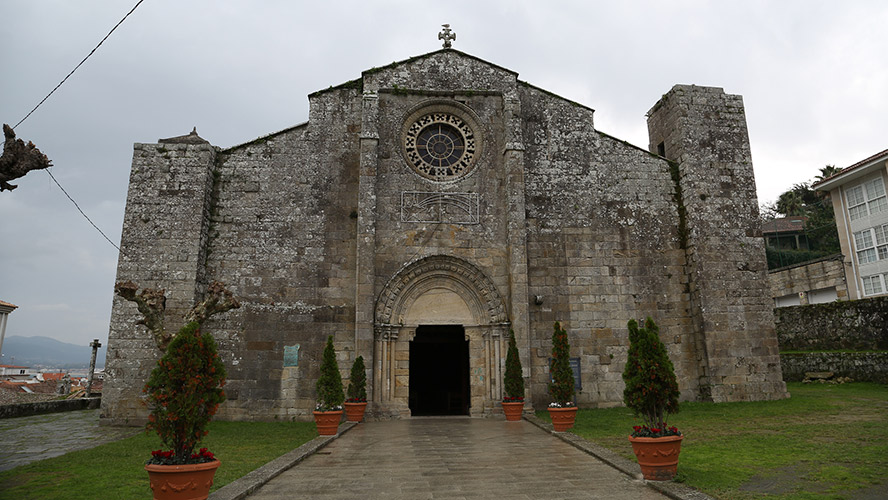
The Virgin of the Rock, a monumental sight
On the city’s western edge, on the cliffs overlooking the waters of the Atlantic, a huge 15-metre-high statue crowns Mount Samson. Inaugurated by Bishop Antonio García y García on 14 September 1930, the Virgin of the Rock is a unique Marian image, built in granite (except for the face and hands, which are in white marble, and the crown, made of porcelain), holding a boat/viewpoint in her right hand. You can take a spiral staircase up to this place, also made of stone, which winds up through the interior of the statue itself. Needless to say, the views of the sea, the coast, and Monte Boi from this height are simply spectacular.
Around the statue, the Mercedes de la Escalera Park is a large recreational area with trees, tables, and benches, where a pilgrimage dedicated to the Virgin is also held every year in August.
The best beaches in Baiona
In the heart of the city centre, the long sandy beach of Praia Ladeira is perhaps the most iconic one in the city. A perfect place to swim, take a nice walk (it’s around 1,700m long), and even to have a look at the wonderful Esteiro da Foz, protected by the beach itself and the huge sandbank called Punta da Foz or Punta Ladeira, which separates the estuary of the river Miñor and the sea.
At the opposite end, on the other side of the Santa Marta peninsula, the small beach of the same name is also very popular. At the foot of Monte Boi and Monterreal Castle, the beaches of Os Frades, A Ribeira, A Cuncheira and Barbeira are small but no less spectacular.
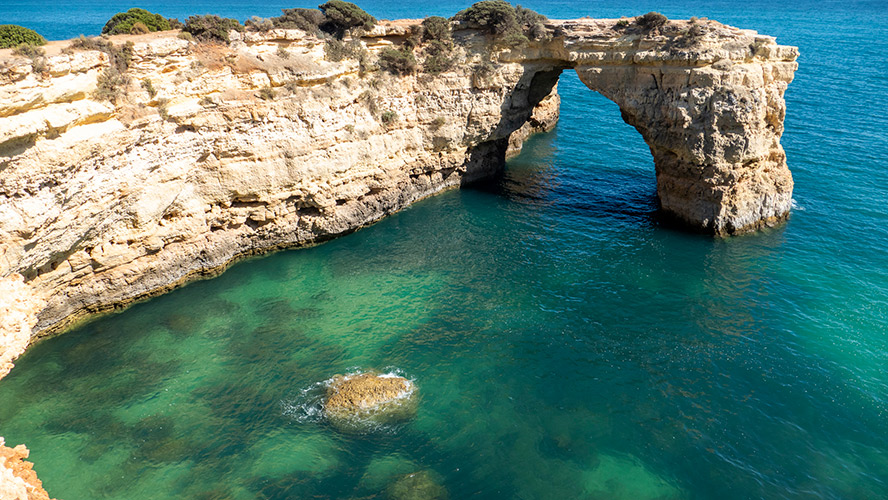
Where to eat in Baiona
In general, the Rías Baixas are a gastronomic paradise, and Baiona is certainly no exception. Both in the old town and in the city’s more modern areas, you can enjoy all kinds of delicacies. Here are a few examples:
Restaurante Naveira. Right on the seafront, opposite the fish market, Casa Naveira has been a culinary reference point in Baiona since 1940. It offers a wide range of seafood, fish, rice dishes, meats, homemade desserts, and Galician wines.
A Taberna do Abrente. Between the port and the collegiate church of Santa María, this place offers a feast of authentic Galician flavours, from the sea and the land, ranging from fish and octopus caldeirada (a dish with garlic, onion, and paprika) to grilled meat and homemade desserts.
Casa Rita. In the area where the Monte Boi peninsula meets the town centre, this restaurant offers only the freshest produce that arrive daily from the fish market (it doesn’t have a regular menu). And all of this is accompanied by over 300 of the finest wines.
Paco Durán. Climbing up to the Serra da Groba, on the outskirts of Baiona and with spectacular views of the old town and the estuary, this restaurant that specialises in seafood and traditional Galician cuisine is also an excellent option for enjoying the best gastronomy.
Of course, alongside the many restaurants in the area, the Parador de Baiona state-owned hotel is an excellent choice for enjoying the best Galician cuisine in either of its two restaurants, the elegant Torre del Príncipe and the Enxebre A Pinta, which is more informal and has a seafaring ambience.
What to see in the area around Baiona
Beyond the urban surroundings of the town itself, Baiona offers all kinds of natural, historical, and cultural treasures. Places full of charm that are certainly worth a visit.
Islas Cíes. Located at the mouth of the Vigo estuary, like a natural barrier, the three islands of this fantastic archipelago have, in their own right, become one of the most visited tourist attractions not only in the Rías Baixas but in Galicia as a whole. In fact, Rodas beach, the longest beach on the island of Monteagudo, with its fine white sand and crystal-clear waters, has been named the best beach in the world.
Visiting this unparalleled natural paradise is practically a must, although, fortunately, access to the Cíes Islands is restricted and their conservation (as part of the Galician Atlantic Islands National Park) is an absolute priority.
Esteiro da Foz. The mouth of the river Miñor, which separates Baiona from Nigrán, is also a wonderful natural environment, featuring 90 hectares of estuary and marshes full of flora and fauna. Included in the Natura 2000 Network, you can visit this highly valuable ecosystem on foot or by bike, through different paths, trails, footbridges, and viewpoints (some equipped with QR codes to facilitate birdwatching) scattered throughout the area. These include the iconic Romanesque bridge of La Ramallosa, which has spanned the river for some eight centuries.
Monastery of Santa Maria de Oia. About 20 kilometres south of the city, this ancient Cistercian monastery founded in the 12th century is a real gem. Located by the sea, in a narrow cove, the monastery has Romanesque, Gothic, and Baroque elements, and after years of being abandoned, and even a period as a concentration camp for Republican prisoners from the Civil War, the place has been restored by a private group. In addition to its historical and architectural heritage, the monastery regularly offers an interesting cultural programme that includes music, conferences, tastings, and other events, as well as a permanent exhibition on the famous graffiti that the Republican prisoners who lived there between 1937 and 1939 left marked in pencil on its walls.
Faro Silleiro. Marking the entrance to the Vigo estuary from the south, Cape Silleiro is a strategic point both for the municipality of Baiona and for the Galician Atlantic coast as a whole. In its surroundings you can find old military defensive structures, wonderful viewpoints and, above all, the famous red and white lighthouse of Silleiro, dating from the beginning of the 20th century and standing some 30 metres high. And although the building and the lighthouse tower aren’t open to visitors as such, it’s well worth a visit to enjoy the marvellous views and the imposing architecture of this unique historical site.
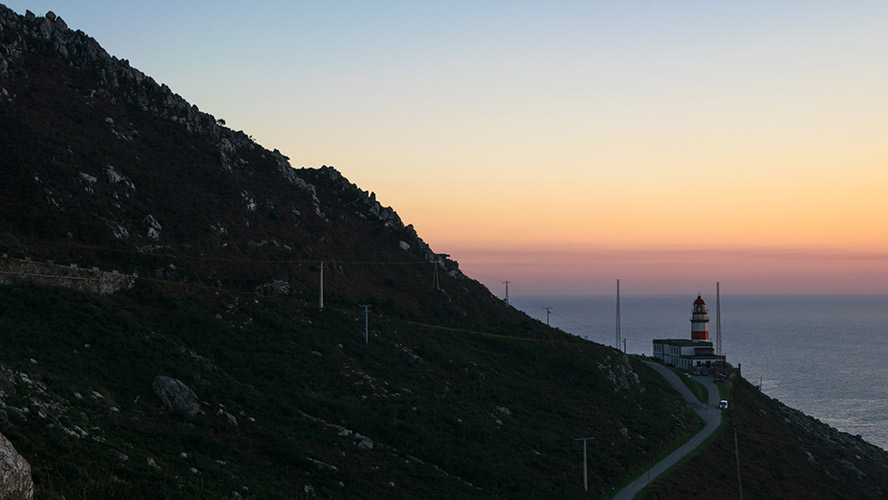
Serra da Groba. Behind the town and Cape Silleiro itself, the land rises, as if defying the sea, to give rise to another of the area’s great natural treasures. It’s an ideal place to enjoy the views and landscapes of the sea and mountains, go on various hiking routes, and practise all kinds of sports and leisure activities. Places such as O Chan da Lagoa, O Cortelliño, O Montouto and, above all, the rock art site of Outeiro dos Lameiros, with its collection of petroglyphs that are over 4,000 years old, are just some of the highlights that this fascinating territory, which spans some 50 km2, has to offer.




































































